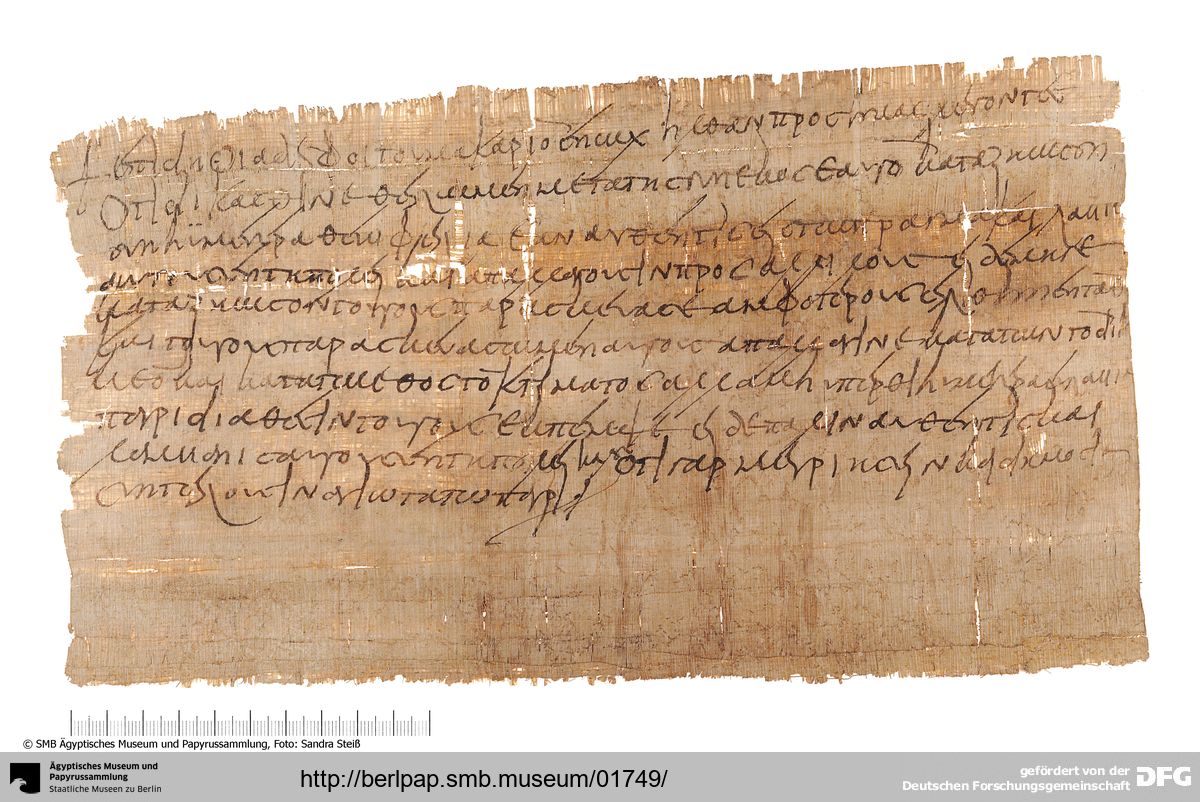BGU I 103 (P. 6876)
This papyrus was part of the private collection of Heinrich Brugsch and got to the Ägyptisches Museum und Papyrussammlung in 1891. It was probably found in the area of the Fayum, the oasis on the western part of the Nile in Egypt. Through palaeographic peculiarities this text, written in Greek language, can be dated to the 6th or 7th century AD.
This papyrus is a petition written by an administrator, Abraam, addressed to the abbot of a monastery, namely Archimandrit Serenos, concerning a conflict between the two brothers of the recently deceased Henoch and his wife. Serenos is asked to take care of the dispute over the heritage or to hand the decision over to Abraam. The latter is administrator at the farm of Pinarachtis in the district Oxyrhynchites, which belonged to the monastery led by Serenos. Other sources suggest that this farm also owned a post office.
After a brief summary of the dispute the following situation can be reconstructed: following the death of Henoch his two brothers and his wife started a fight over the inheritance. The latter wrote to Abraam asking him to settle the dispute in their favour. He was supposed to act as judge between the two parties. However the administrator was not authorized to give a ruling without the permission of the abbot, so he composed this document asking him to decide. He should either rule “according to the farm’s custom” and bring forth the reconciliation in town or hand the matter over to Abraam. The text provides a great insight into the jurisdiction of the church and the administrative system of the time.
Apart from the content two other matters of this papyrus are of particular interest: the papyrus is written transversa charta, meaning it was rotated by 90° before it was written on. The script on the front side runs across the fibres, not parallel to them as usual. It is possible to determine that the inscribed side is indeed the front one by observing the join where the two sheets were glued together: it, too, runs parallel to the script. In the end the papyrus was folded several times, the address was added on the outer backside and it was finally tied up. To prevent the letter from being secretly opened it was sealed with a round stamp with diamond shaped patterns still visible on the backside of the document.



